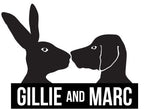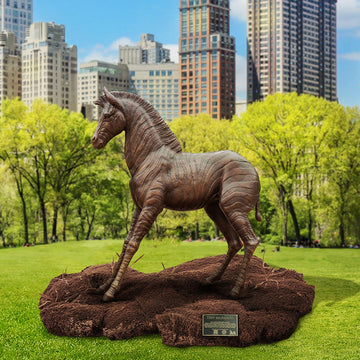Dimensions
Sculpture
55.1 x 56.7 x 31.9 inch (H*L*W) 551.3 lbs
140 x 144 x 81 cm (H*L*W) 250 kgs
Base
15.7 x 31.5 x 39.4 inch (H*L*W)
40 x 80 x 100 cm (H*L*W)
Medium
Bronze
Style
Contemporary Sculpture, Wildlife, Activist Art
Edition Number
/6
Description
It can be a bit confusing for a young zebra when it comes to telling mum apart. This 1-month-old baby boy has been alone with his mother for the first weeks of his life, breathing in her scent, remembering her call, and counting her stripes. Now he’s with the herd and there are stripes everywhere but he somehow knows who to follow. But if he looks past the herd there are a lot of others who don’t have stripes, and they seem to be getting to the food and the water first! Led by humans, these other herds are taking over.
With stripes as unique as our fingerprints, the zebra is an iconic member of African wildlife. Grevy’s zebra is the largest and most endangered and is more closely related to the wild ass than the horse, the more common plains zebras’ cousins. Its name comes from the president of France, Jules Grevy who was given a zebra as a gift by the emperor of Abyssinia (modern-day Ethiopia) in 1882. When a French zoologist met the gifted creature, he named it in honour of his president.
Zebras only give birth to one foal at a time and these babies are born with the ability to walk nearly immediately. This is very important because they are very at risk of predators and since they don’t hide they need to be able to run. New mothers keep their young separate for the first few days of their foals life so that they don’t imprint on any other mare. The foals must learn their mother's pattern, vocalisations, and scent and in the first few days of their life, they will follow anyone. Once the foal has imprinted, she will sometime leave her foal in a ‘kindergarten’ while she goes in search of water. These are groups of foals protected by an adult, often a territorial male, and a mare. Normally the foal will follow his mother wherever she goes, learning what to eat and the migratory routes of the herd following the seasons.
Grevy’s zebra is a very important part of the ecosystem on the dry, semi-arid scrub and grasslands they call home. Grazing with many other creatures such as antelope and wildebeest, the zebra helps them all out by taking off the hard, dry ends of the grass that the other grazers can’t digest. The zebra is well adapted to this environment. Unlike the plains zebra who needs lots of water, Grevy’s can go 5 days without any at all!
Grevy’s zebra has seen one of the biggest declines in their environment than any other African animal. With more and more land being converted to grazing pastures for livestock, the zebra has to compete for both food and water. Because of this, the survival rate of young zebras is very low. In the past 30 years, the population has dropped approximately 54%. In Ethiopia, the main threat is hunting, primarily for their skins but also for their meat and use in medicines.
Artwork Features
Gillie and Marc love working in bronze for many reasons. Bronze is a very hardy material and will last forever. As experts in coloring bronze, Gillie and Marc enjoy experimenting with their sculptures, adding a splash of color to brighten the work, making it even more unique. > Read more
For every purchase of a bronze sculpture you will receive a certificate of authenticity, titled, signed, dated and editioned by the artists.
Care Instructions
Bronze is very easy to clean, allowing you to enjoy your precious sculpture with minimal upkeep. > Read more
Shipping, Returns and Refunds
Please visit this page to learn all about our policies. > Read more




